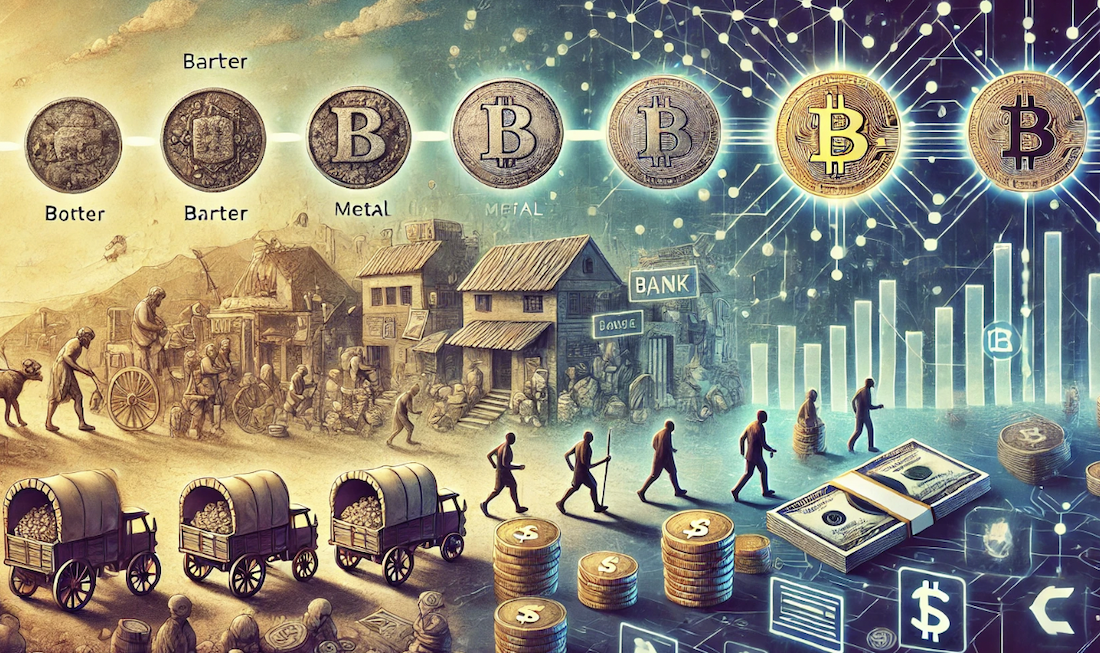Introduction
The currency system is not new, but it was created over time, and barter was the basis of this system, where goods were exchanged for others. With the development of societies, this system faced a major challenge, as some goods were difficult to transport or divide, and because necessity was the mother of invention, metal currencies were relied upon more to change and exchange goods. These currencies are made of electrum. The first appearance of coins was around 600 BC. It is a mixture of gold and silver with engravings to indicate their value. These currencies spread all over the world after that.
1-Types of currencies
Currencies can be classified into several types
Commodity money
It is a metal sector of gold and silver. This type of currency was the most prevalent in the past until it developed into several other forms. One of the advantages of commodity money is that it has intrinsic value.
Paper money
It is the most widely used type in our current era. Unlike the first type, paper money has no intrinsic value; instead, it derives its value from the trust of the people who use it, such as the dollar and the euro.
Bank money
Bank money is money that exists in bank accounts for individuals and companies. It can be used electronically and is often used in digital transactions.
Cryptocurrencies
Cryptocurrencies or digital currencies are currencies that recently appeared in 2009 precisely. Bitcoin is considered the first currency to be introduced by an unknown person calling himself Satoshi Nakamoto. These currencies are characterized by being decentralized, i.e., no independent institution controls them. Still, these currencies operate on blockchain technology, a central ledger that records all transactions between traders of these currencies.
2-Function of currencies
Means of exchange
Currency plays a pivotal role in completing trade between two parties, as it enables the two parties to agree on their desires and achieve the deal
between them
A store of value
The most important feature of currency is that it enables the storage and preservation of its value.
Unit of account
A single currency can be adopted to measure the value of a product or service, making comparing prices very easy. It is a common base for determining value. The deferred payment standard enables people to lend and borrow money.
3-Currency and the global economy
Currency is essential in the global economy, facilitating trade, investment, and cooperation between countries. Currencies can strengthen one economy at the expense of another or tip the balance in favor of one economy over another. For example, the European Union countries agreed to unify their currency. They adopted the euro as their currency, putting it in a good and advanced position over other currencies.
Exchange rates
The exchange rate, which is affected by various factors, such as economic and political stability, inflation, and interest rates, compares one currency to another. A strong currency makes a country’s exports more expensive, and it is less expensive, which causes the country’s economy to revive.
Reserve currencies
Governments maintain currencies for use in international transactions, and these currencies can be considered reliable and stable. The US dollar, the euro, and the yen are the most widely used of these currencies.
Cryptocurrencies
Cryptocurrencies: The future of money The development of currencies worldwide has produced cryptocurrencies. They are less expensive and enable transactions to be carried out quickly. However, they have unique challenges. Like traditional currencies, they are unstable, which poses a challenge for the government and financial institutions to deal with them.
Conclusion
Currency is an essential and practical element of the world economy. Since immemorial, it has been used in its old form (barter) until the advent of digital currencies. Throughout all these ages, currencies have played their role in meeting society’s needs by facilitating trade, which enables economies to flourish and develop. With the technological progress that the world is witnessing, we may see other innovations in currencies.
